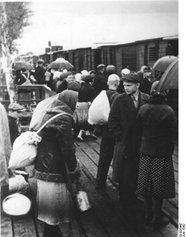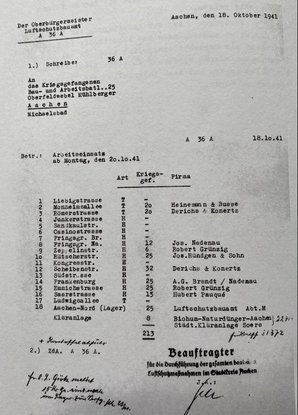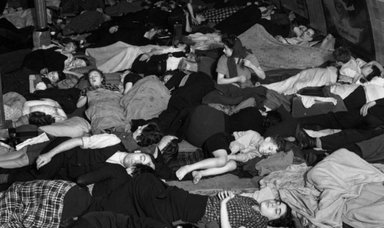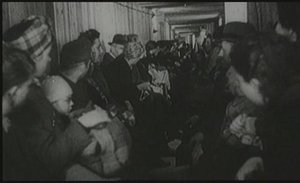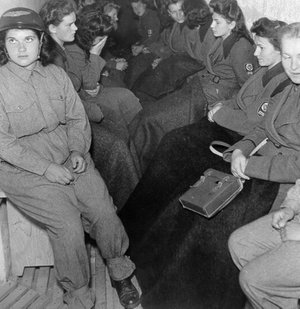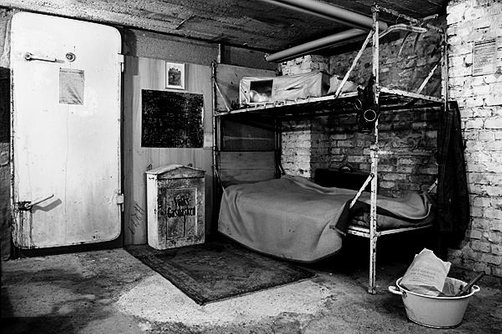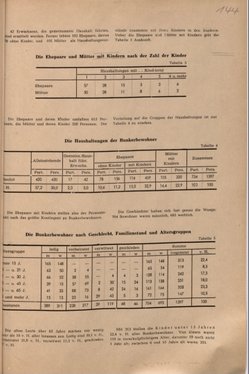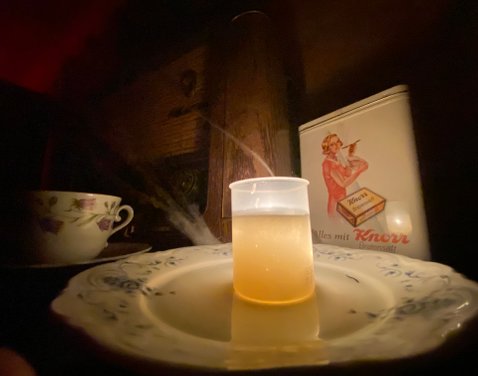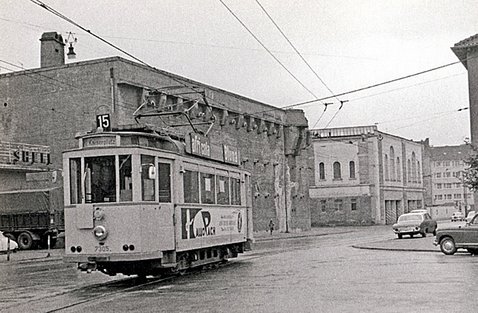The NS Bunker
General representative Immediate Hitler program Fritz Todt with Adolf Hitler
General building inspector Albert Speer with Adolf Hitler
On the night of August 25-26, 1940, the Royal Air Force's first closed air raid on Berlin took place. The bombing of the Reich capital, which the Nazi propaganda had always declared impossible, caused the Nazi leadership to be extremely upset. On September 26th, it was decided to build air raids for the civilian population. Finally, on October 10, 1940, the "Führer's Decree" ordered the construction of tens of thousands of bunkers for the civilian population.
As part of the largest civil construction project in human history, the "Immediate Hitler Program", a bunker for the civilian population of Aachen was built between August 1941 and May 1943 on the Aachener Scheibenstrasse under the direction of the Luftschutzbauamt under the leadership of the authorized representative Fritz Todt and general construction inspector Albert Speer.
Drawn by the Aachen architect Wilhelm Schmitz-Gilles and built by Derichs & Konertz.
The bunker has a gross floor area of 4 x 1,018 m2 = 4,072 m2
7,380 m3 of building materials used for the bunker: 4,390 m3 of wall, 1,365 m3 ceiling and 1,625 m3 roof components were formed into one of the gray giants in the middle of the cities.
With an enormous reinforced concrete density of approx. 2500 kg / m3, a package of 17,500 tons was created
Grundriss 1. Obergeschoss
According to the plans of the Aachen architects Wilhem Schmitz - Gilles, the Aachen company Derichs & Konertz started the construction work in August 1941.
The gray giant was built exclusively by forced laborers who were housed in a Derichs & Konertz camp on the Laurensberger Wildbach.
Each of the men knew that you would never find protection yourself in the structure you built .. And yet you shaped yourself 7,000 m3 in reinforced concrete - 200 m3 in bricks and 18 m3 in sand-lime brick within a very short time a civil defense bunker in the middle of downtown Aachen.
The forced laborers employed by Derichs & Konertz for the 35th forced laborer Baubatalilons were housed in a camp on the Laurensberger torrent. Their living conditions differed enormously from those of the prisoner-of-war workers.
Forced laborers were at the lower end of the allotment quantities for food. Often they were so exhausted that they were occasionally moved to farms to strengthen them.
In the years between 1941 and 45 several hundred thousand forced laborers lost their lives. Many of them died on the construction sites and stayed there.
The unbelievable misanthropy of the NS regime speaks the recipe for "Russian bread", published by the Reich Ministry of Nutrition in 1942.
In addition to water and nettle soup, this is often the main food of the forced laborers. Imagine the unimaginably hard work on the bunker construction sites in Aachen with nothing in your stomach but .....
Russian bread:
50% rye meal
20% sugar beet pulp
20% cell flour (wood flour)
10% straw meal or leaves
Find out more about forced labor in Aachen and the surrounding area on our tours. When deployed in Aachen companies, church organizations, public employers and private individuals and precisely when building bunkers, these people replaced the German workers who were deployed in the war and often paid for it with their health and their lives.
From August 1943, the bunker provided protection for over 1,300 residents of Aachen during the countless nights of bombing and, ultimately, during the Battle of Aachen, which is considered to be one of the bloodiest battles of World War II.
While the world was going under outside and the bunker shook with bombs, Aachen mothers and their children crouched on the floor and tried to encourage each other.
On the morning of October 21, 1944, American soldiers liberated 1,300 civilians from the Scheibenstrasse bunker and described inhumane pictures of mothers who had vomited in fear and crouched with their feces and urine with their children on their laps. Of old people who sat shivering on the floor with fear close to madness, sitting between these people, deceased Aacheners who were not up to the madness and died in the bunker.
All these people had been waiting in the bunker for weeks without electricity, without lights and without a water supply.
Don't play with the bunker bellows!
How can you live in a building with huge gathering rooms, the infrastructure of which was not made for it? How do you get along? Cooking, working, sleeping?
How many Aachen families lived in the bunker on Scheibenstrasse?
Above all, how long could people live like this?
Accompany us on our tours to the old living quarters of the families and find out how life in the bunker was possible.
October 21, 1944 - The hour - 0 -
After the smoke from the shell around Aachen has cleared, the Aacheners stand on a huge mountain of rubble of 2.5 million cubic meters of bombed-out houses. The first post-war winter is imminent and the Aachen families need a roof over their heads.
So the Mayor of Aachen and Fritz Deubner came up with the idea of turning the empty bunkers into emergency quarters.
The Aachen families move into the gray giants with what little they still have.





